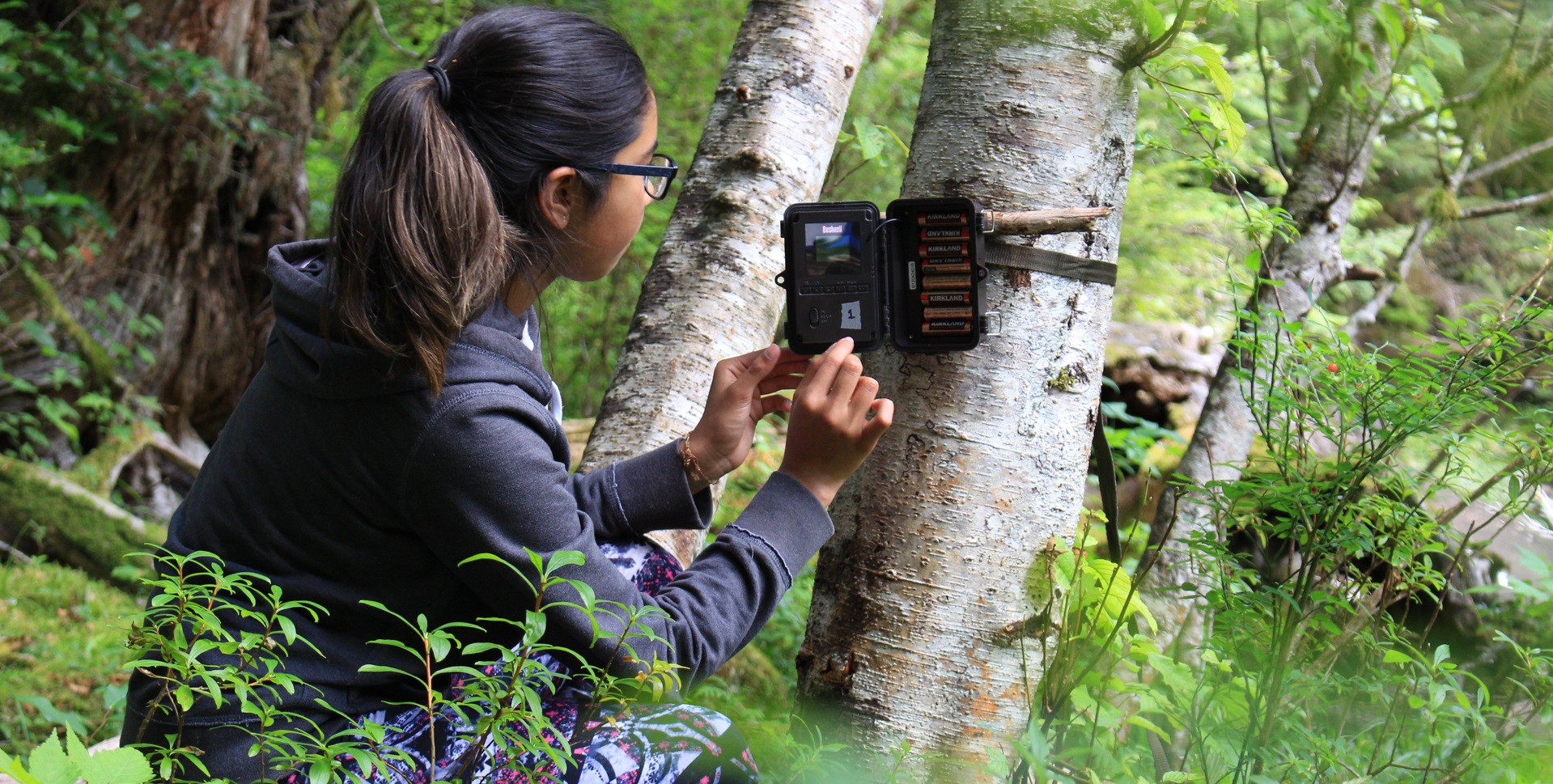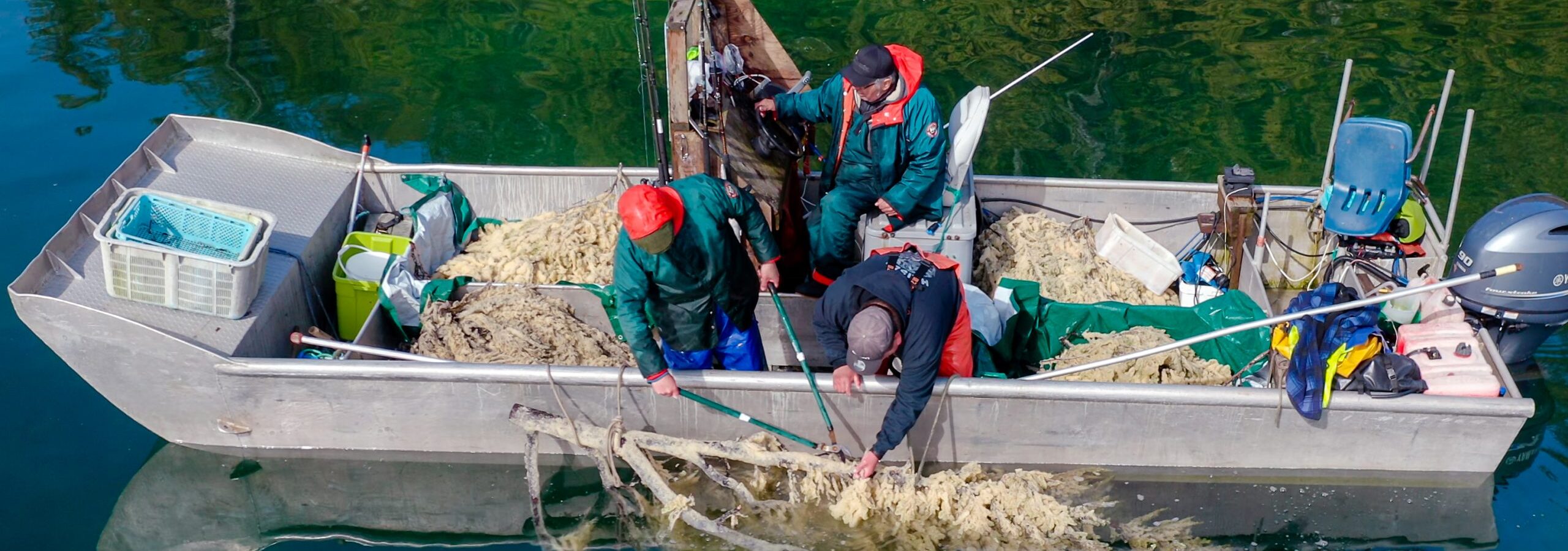When Doug Neasloss was first sent out as a young bear guide in early 2000 to find a white bear, he thought someone was pulling his leg. While the Kitasoo/Xai’xais people have always known that Spirit bears existed, he says, nobody talked about them, in order to keep them safe. “I went for that walk in the forest and a Spirit bear came out from the trees with a salmon in his mouth,” Neasloss remembers. “He lay down several feet in front of me with the sun streaming through the forest. It was a pretty magical moment.”
Results from a new study published in Ecological Solutions and Evidence July 5 now raise questions about future protection of the culturally-significant Spirit bear.
Multi-year research, led by the Kitasoo/Xai’xais and Gitga’at Nations, shows the white-coated black bear is up to 50
per cent rarer in the Great Bear Rainforest than previously estimated. Also concerning to Neasloss, approximately half of all hotspots where the Spirit bear gene is most prominent are found to be outside of currently protected areas.
“We have the rarest bear on the planet in our backyard and we want to do what we can to make sure it’s protected. And not just the bear but the habitat,” points out Neasloss, Kitasoo/Xai’xais Stewardship Director. “These Spirit bears are important to the community culturally and in terms of our economy.”
Bear mapping and hair sampling was conducted between 2012 to 2017, led by the Kitasoo/Xai’xais and Gitga’at Nations with the University of Victoria, Spirit Bear Research Foundation and Raincoast Conservation Foundation. The findings are significant for the Kitasoo/Xai’xais, whose economy depends largely on wildlife-viewing tourism through Spirit Bear Lodge.
“The well-being of our people is directly related to the well-being of these bears,” Neasloss reports. “We employ about 40 people and almost all our families are involved in tourism – whether it’s as hotel staff, tour guides, marketers or boat operators.”
The study is an offshoot of collective large-scale bear research by the Gitga’at, Heiltsuk, Kitasoo/Xai’xais, Nuxalk and Wuikinuxv Nations, covering more than 20,000 square kilometres. As a next step, the Gitga’at and Kitasoo/Xai’xais undertook the Spirit bear population study, to determine how well the bears were being protected and what the gaps were. The research identified not only white bears, but also black bears that carry the white bear gene.
The number one priority is to protect black bears and increase habitat protection, says Neasloss. “The Great Bear Rainforest Act is great, but I think it missed the mark in terms of protecting the most important areas for Spirit bears. I think we need to look at more protected areas.”
First Nations-led science is an important step toward this. “It’s not just western science we’re providing, it’s also traditional knowledge,” he points out. “We use those areas all the time and our people have a good idea of the territory and what’s going on.”
Christina Service, Kitasoo/Xai’xais Wildlife Biologist and Science Coordinator who led the research, says the project was undertaken in part, because previous estimates didn’t resonate with people on the ground, such as Neasloss or bear guide Marven Robinson in Gitga’at territory. Learning that white bears are much rarer than estimated was a “gee whiz moment” for scientists, she says, but not for the communities of Klemtu and Hartley Bay.
What did come as a surprise were the findings that only half of all Spirit bear hotspots were safeguarded. “In Kitasoo/Xai’xais territory, a lot of the landscape has been protected,” says Service, “so it’s surprising that there’s still so much work to do if the Nation desires a high level of protection.” She says conservation planning based on preserving genetic diversity that leads to unique colours, such as the white bear gene, is a new way of doing things.
“We want a conservation plan for this rare and culturally important colour of animal basically, and that’s a unique undertaking,” says Service. “Generally, a traditional conservation approach would say “the black bears in your area are doing fine. So if the population of black bears stays static, but the genetic change that causes the Spirit bear blinks out, that would get the same conservation win score.”
Photo credit: Rosie Child


